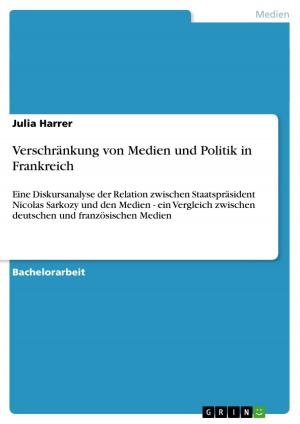Trends und Motive von Frauen im Studium an deutschen Universitäten und Entwicklungen im europäischen Raum
Business & Finance| Author: | Sebastian Kaiser | ISBN: | 9783638013178 |
| Publisher: | GRIN Verlag | Publication: | February 27, 2008 |
| Imprint: | GRIN Verlag | Language: | German |
| Author: | Sebastian Kaiser |
| ISBN: | 9783638013178 |
| Publisher: | GRIN Verlag |
| Publication: | February 27, 2008 |
| Imprint: | GRIN Verlag |
| Language: | German |
Studienarbeit aus dem Jahr 2006 im Fachbereich BWL - Allgemeines, Note: 1,7, Technische Universität Dresden, 11 Quellen im Literaturverzeichnis, Sprache: Deutsch, Abstract: In recent decades a change took place in Germany: more and more women started studying. This change is still continuing. Thereby until the 1960s only 24 per cent of all students were female. The positive trend is among other things supported by the 'Bologna Process'. The increase of the last decades concerning women who study will proceed in future. There are several reasons to mention. The disproportionate part of women attending higher education - in 2003 55 per cent of the high-school graduates were female - represents the significant change. In some federal states like Brandenburg or Thuringia the share of women is even 60 per cent. Therefore the amount of young people who start studying has almost quadrupled since 1960. This great leap from 8,5 per cent to 42,5 per cent can not be stated with the same proportion among men. Their fraction only rose from 12,5 per cent to 36,5 per cent. With the conversion of the 'Bologna Process' a dynamic sampling of the German higher education system takes place. Now it is possible for women, as it is also mentioned in the survey 'Frauen im Studium', to study fast, but also practice-orientated. It is important to improve the current access situation into the German higher education system, especially in the range of professional education. Furthermore the already gained knowledge concerning professional education should be taken into account when the decision about the access to university is made. Especially in countries where the higher education system is based on bachelor and master degrees the proportion of female students is verifiable higher.
Studienarbeit aus dem Jahr 2006 im Fachbereich BWL - Allgemeines, Note: 1,7, Technische Universität Dresden, 11 Quellen im Literaturverzeichnis, Sprache: Deutsch, Abstract: In recent decades a change took place in Germany: more and more women started studying. This change is still continuing. Thereby until the 1960s only 24 per cent of all students were female. The positive trend is among other things supported by the 'Bologna Process'. The increase of the last decades concerning women who study will proceed in future. There are several reasons to mention. The disproportionate part of women attending higher education - in 2003 55 per cent of the high-school graduates were female - represents the significant change. In some federal states like Brandenburg or Thuringia the share of women is even 60 per cent. Therefore the amount of young people who start studying has almost quadrupled since 1960. This great leap from 8,5 per cent to 42,5 per cent can not be stated with the same proportion among men. Their fraction only rose from 12,5 per cent to 36,5 per cent. With the conversion of the 'Bologna Process' a dynamic sampling of the German higher education system takes place. Now it is possible for women, as it is also mentioned in the survey 'Frauen im Studium', to study fast, but also practice-orientated. It is important to improve the current access situation into the German higher education system, especially in the range of professional education. Furthermore the already gained knowledge concerning professional education should be taken into account when the decision about the access to university is made. Especially in countries where the higher education system is based on bachelor and master degrees the proportion of female students is verifiable higher.















